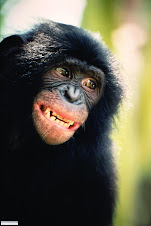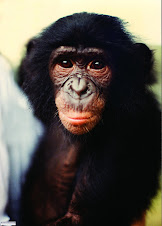
 Speke's gazelles were named after John Speke, an African explorer who looked for the source of the Nile, but ended up naming a bird, a rodent, and an antelope. Speke's are endangered, and the wild numbers are estimated in the low ten thousands. They are found in small, fragmented populations in the horn of Africa, (Somalia and Ethiopia). The largest threat to their survival is the loss of grazing due to the encroachment of livestock.
Speke's gazelles were named after John Speke, an African explorer who looked for the source of the Nile, but ended up naming a bird, a rodent, and an antelope. Speke's are endangered, and the wild numbers are estimated in the low ten thousands. They are found in small, fragmented populations in the horn of Africa, (Somalia and Ethiopia). The largest threat to their survival is the loss of grazing due to the encroachment of livestock.This little female Speke's gazelle was born at the Jacksonville Zoo and Gardens last week. She is getting a daily catch-up and weighing (she is around three pounds; the scale reads in metric) for the first week of life, following a protocol established by the St. Louis Zoo.
Only four founding animals had been imported into this country in the late 60's and early 70's, so the resulting inbreeding led to problems including low birth weights, lack of viability, and low fertility. In the 1980's, under guidance of the SSP (Species Survival Plan) the St. Louis Zoo instituted a risky, but critically important program to rapidly breed all of the animals, to produce a large number of offspring, quickly. Over one hundred Speke's gazelles have been born at the St. Louis Zoo. Those with fatal defects did not survive, but the others had not inherited the harmful genes. The plan worked and over two to three generations, the problems had largely disappeared.
The most noticeable feature of this nearly two foot tall antelope is the three to five folds of skin that form the bridge of the nose. This can be inflated into a resonating chamber for the loud, explosive gunshot sneeze that the gazelle uses in alarm. It is also thought to be used to help in cooling because Speke's gazelles live in hot, dry semi-desert habitat. They are also crepuscular (active at dawn and dusk) to help conserve moisture.
Both sexes have S shaped horns, but the male's is noticeably heavier at the base. The gestation is six to seven months and the single, (rarely twin) offspring is weaned at two to three months, Their lifespan is twelve years.
Our little female is staying in an off-exhibit area that is visible from the train. She is often hidden in the grass (a protection defense to avoid predation), but has already started playing, and "pronking" about the yard, with all four feet raised off of the ground in a series of high bounds (also adaptive, to escape predation when being chased).
Photos by Jacksonville Zoo and Gardens













No comments:
Post a Comment